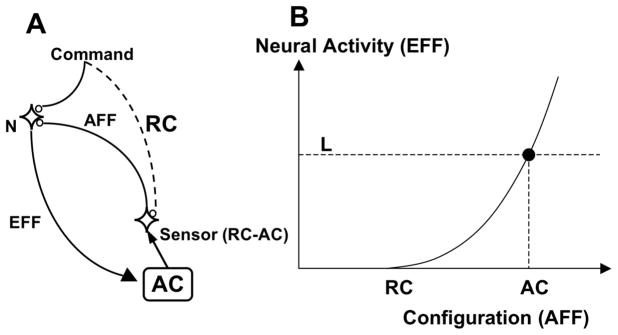Figure 2.
An illustration of control with referent configurations. A: A command expressed in membrane potential units (V) is sent to a neuronal pool (N); this signal depolarizes the target cell membranes and modulates the threshold for action potential generation by N. Output of N (efferent command, EFF) is distributed along a branching tree of similar operators (not shown in the Figure) such that each output of the “top” operator serves as an input into a hierarchically lower operator. Ultimately, the process results in an input into alpha-motoneuronal pools and, via the tonic stretch reflex, leads to changes in muscle activations and in the actual configuration of the body (AC). Given external conditions, the signal from the controller specifies a referent configuration (RC), defined as a configuration, at which all the muscles would be at thresholds for their activation. A sensor neuron provides feedback (afferent signal, AFF) to neurons N reflecting the difference between RC and AC. B: The activation of the neurons produces a mechanical effect that moves AC towards RC. When the two coincide, N become silent, and the system stays at RC. If an external load (L) prevents AC from moving, an equilibrium state is reached corresponding to non-zero neuronal (and muscular) activation and a combination of positional and force variables.

